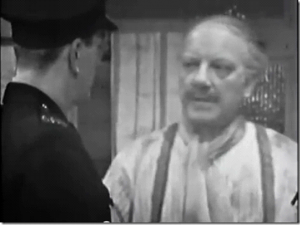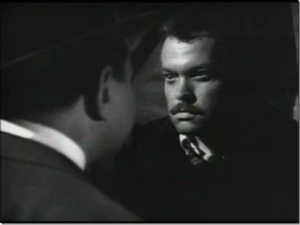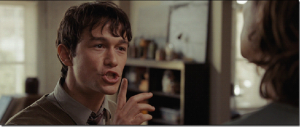Alec Bray
The “ITTP Approved Skills Scheme” (Bernie Newnham) got this long lost former Tech Op person thinking about something that has been bothering me recently.
In the good old days of 4:3, an over-the-shoulder 2 shot looked like this (sampled from “Z-Cars”):
(Click on the picture below to see larger version:
use your Browser’s BACK button to return to this page)
This has been captured from video footage but the principal subject is on a strong point (1/3rd line) as is more or less the second subject.
This is clearer in the following picture:
(Click on the picture below to see larger version:
use your Browser’s BACK button to return to this page)
reference:
“OVER-THE-SHOULDER SHOT“
http://tecnicacinematografica.blogspot.co.uk/2008/12/shot
(sorry – this is in Spanish but had a very clear illustration of my point)
More and more frequently, both in drama and in news reporting, I see the over the shoulder 2-shot looking like this:
(Click on the picture below to see larger version:
use your Browser’s BACK button to return to this page)
The main subject is on a strong point (1/3) but the second subject is (literally) marginalised.
This still is taken from another media theory website:
9. Over The Shoulder Shot
https://chasestokesmediatheory.wordpress.com/2012/03/page/2/
They can’t both be right, can they? Is it a new “fashion”?
Here is a theory…
To get an over the shoulder two-shot in a “theatrical” type, multi-camera, TV production, in 4:3 especially, the actors have to stand relatively close together to get the both of them in frame. The cameras have to shoot on a medium focal length lens (for studio cameras) to prevent gross perspective distortion (BIG head, small head). The actors also have to stand close together so that the two over-the-shoulder shooting cameras do not see each other (they are close to 180 degrees around from each other). But there are “dead” areas in the frame – both example shots show this.
To get an over the should two-shot in a filmed type, single camera, production, the actors do not need to stand so close together. the 16:9 frame (or wider aspect ratio) allows a closer shot on both subjects without spare “dead” space top and bottom. There is perhaps a wider choice is focal length for the lens. But none of this explains why the “over shoulder” actor is reduced to a half width head or even less (as in the example).
I would love to know the answers!
Roger Bunce
The first two examples (in 4 by 3) are ‘Over Shoulder 2-Shots’. Note that the background face is in MCU(ish).
Your third example (Wide Screen) is a ‘Close-Up’, i.e. a head from the tie-knot up. In this case he’s wearing a tie which proves it! Had it been shot in 4 by 3, it would have been a ‘Single’ (mask it off with bits of cardboard, and you will see). Because it is in wide screen, the shot includes a bit of the foreground figure, which makes it a ‘Dirty Single’. Since the introduction of wide-screen, the Cameraman has had to chose between moving further off eyeline, to get a ‘Clean Single’, or staying close to the eyeline, in which case the ‘Dirty Single’ is unavoidable. Not so much a change of fashion, as a change of aspect ratio.
Alec Bray
I agree – but my point really is that the wide screen shot is called "over the shoulder shot" on its media theory website so that’s what some people are learning! And it’s becoming more prevalent – that and reverse cutting (crossing the line).
Roger Bunce
It’s perfectly possible to have an O/S Single. ‘Over the Shoulder’ refers to the vantage point of the Camera. It doesn’t have to include the F/G figure (not even the shoulder!).






